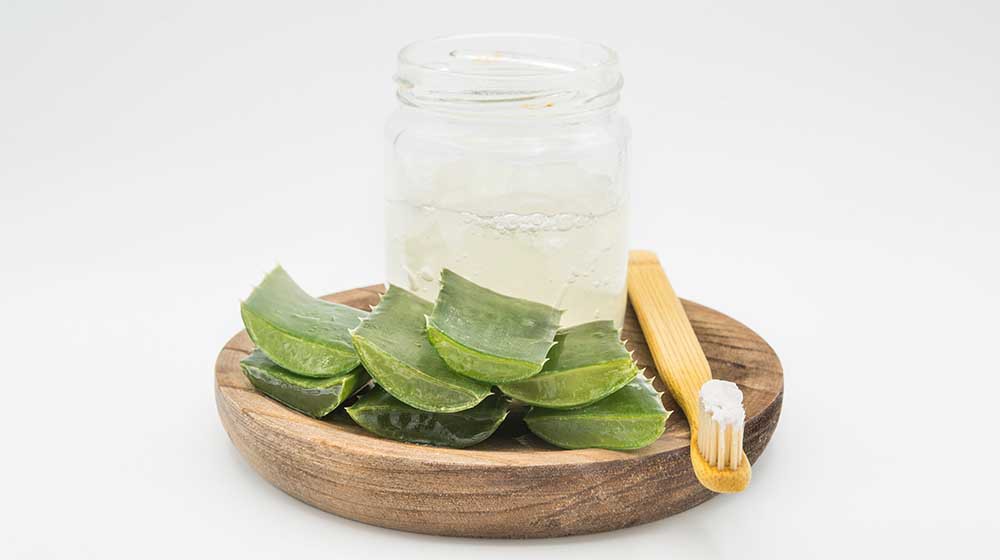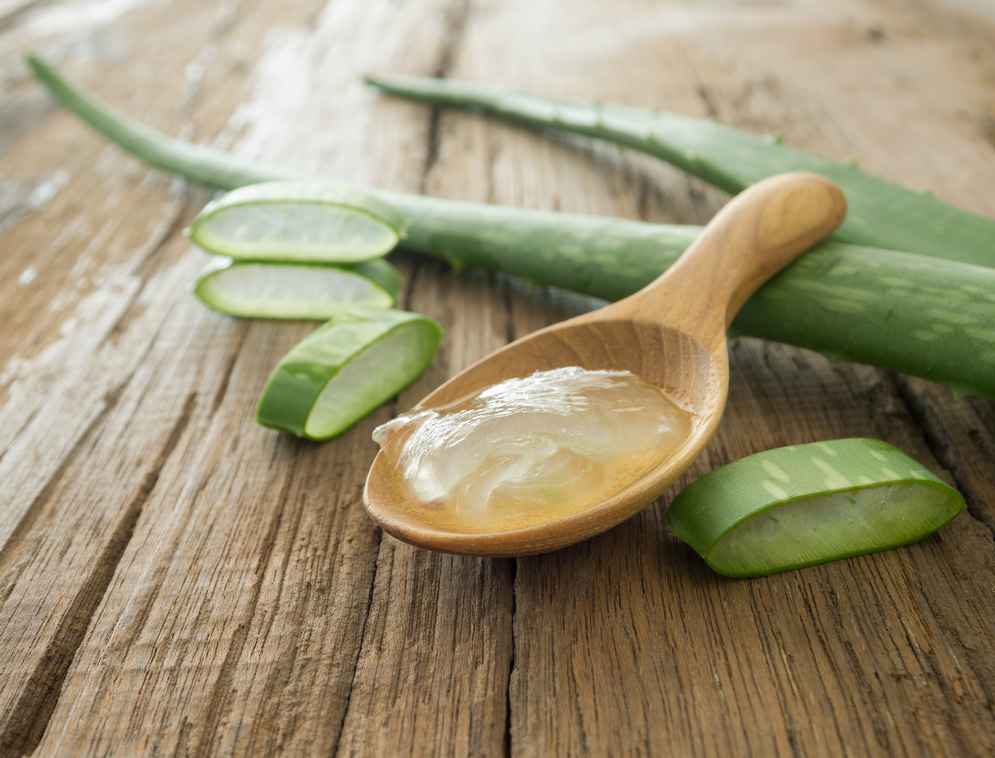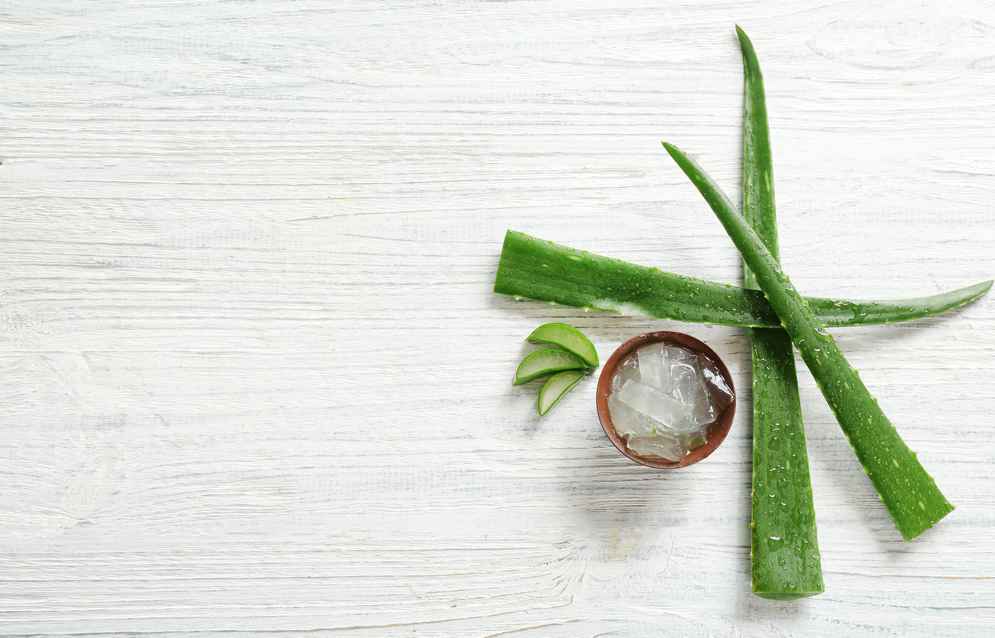New York Dental Astoria - Blog
The Benefits of ALOE VERA for Dental Health
ALOE VERA - a surprising ally in the fight to improve your oral health and Wellness.
The Aloe Vera plant touches our lives in so many ways. Its gel-like substance can be found as an ingredient on our local drug store and supermarket shelves in everything from suntan lotion, cosmetics and ointments to hand sanitizer. And, that's certainly a product we can't get enough of these days.
Recently, Aloe-based drinks have become all the rage with fitness buffs, runners, superstar athletes and just everyday people who are seeking a more natural alternative to Gatorade and the like in order to hydrate themselves.
A little bitter on its own, the liquid extract from the Aloe plant is usually mixed with citrus juices like lemon in order to make the taste more palatable.
Aloe Vera has been around for, quite literally, thousands of years, being used mostly for decorative and medicinal purposes. Hey, you might even have one of these attractive plants sitting in your living room and not realize the benefits it could accrue to you!
Throughout the centuries, certain parts of the plant were also utilized as a herbal remedy for skin conditions, burns, insect bites and even a laxative, of all things. The sap is quite rich in anthraquinones which are very powerful in terms of promoting ease of bowel movement.
Known as the "Lily of the Desert", the Aloe Vera plant was a favorite of the Egyptian Pharaohs. Rumor has it that these royal rulers of the sands even asked that a few Aloe Vera plants be buried with them in the pyramids so that they could make use of them in the afterlife.
There is even a legend that Cleopatra used the Aloe Vera plant to treat her skin and keep it looking beautiful.
We've definitely established the versatility of the Aloe Vera succulent plant.
But, did you know that, over the past few years, this wonder plant has also become an ally of your local dental professional in the fight against cavities, tooth decay and Gingivitis? More on that a bit later, though.
First, let's take you on a quick tour of the Aloe Vera plant and its intriguing
history.
Formally known to botanists and scientists as Aloe Barbadensis, ( and isn't THAT a mouthful ! ), this incredible plant grows mainly in dry, semi-tropical areas such as Africa, Asia, southern Europe as well as right here in the good old US of A, mainly in the southwest regions of the country.
The name Aloe derives from the Arabic word "Alloeh", which means shining bitter substance while vera translates to "true" in Latin.
Several hundred species of the Aloe plant can be found throughout the globe. However, it is the Aloe Barbadensis variety that boasts the best medicinal properties.
This plant has thick, almost fleshy leaves. Each leaf contains a slimy tissue that stores water. These tissues make up the GEL that is used as an active ingredient in various Aloe vera products.
The gel can be sold as a supplement in liquid or capsule form to be taken orally. Aloe Vera gel can also be applied topically in certain instances, depending on the use it is intended for.
The SECOND important substance that the plant produces is called Aloe Latex. This is the yellow pulp that's found just under the outer surface of the leaves.
In terms of wellness advantages, Aloe Vera contains a multitude of useful vitamins and minerals. Do you want some Vitamin A, B, B-12, C, E and Beta-Carotene?
You've got all that and more in this fabulous plant; the gift that keeps on giving.
So, it's no surprise that dental professionals have started to incorporate Aloe Vera into their treatment regimens for patients. It's only smart to avail yourself of every weapon that's available when it comes to your health.
Aloe Vera has anti-inflammatory and anti-bacterial properties in addition to a wealth of antioxidants. This all comes in extremely handy in the fight against gum disease.
Gingivitis! The name alone conjures up some rather unpleasant images of teeth and gums that are in dire need of healing.
Gingivitis occurs when too much plaque accumulates on one's teeth. Plaque is a sticky, film-like residue that can lead to severe inflammation of gum tissues, resulting in painful, bleeding gums.
Thankfully, research studies have found that using an Aloe Vera-based mouthwash can aid in the healing process. Rinsing out your gums with Aloe Vera works well, provided it is in tandem with other treatment methods.
Always remember that there is no substitute for having your dentist perform a thorough cleaning, on a regular basis, to remove plaque from your teeth.
If left untreated Gingivitis can lead to Periodontitis. An oral disease that you want NO part of, Periodontitis will eventually eat into the inner bone in your gum that supports the teeth.
Symptoms to look out for include receding or swollen gums, bad breath and loose teeth. Not a pretty picture, right?
Accepted treatments range from procedures such as scaling and root planing to
bone graph surgery.
No need to panic, though. Just be mindful of your health and be aware of what your body is telling you. And that includes your MOUTH.
Increasingly, many dentists are utilizing Aloe Vera gel to help treat Periodontitis.
Regular application of Aloe Vera gel in the periodontal pocket does help to relieve many of the aforementioned symptoms.
The gel can, additionally, assist dentists in fighting bacterial infections.
In case you are among the tens of thousands each year who are considering dental implants in order to achieve that long-desired Hollywood smile, we've got some good news for you.
Selected research studies have shown that Aloe Vera can play an important
role when it is used around dental implants to control inflammation from bacterial contamination.
When you visit your dentist for a twice-yearly check-up and cleaning, one of the things that they will be looking for is any signs of oral lichen planus.
Sounds like one of those creepy creatures from the Jurassic Park movies. And, when it comes to having adverse effects on your mouth, lichen planus can, in many ways, be just as scary.
Oral lichen planus translates to those unsightly and uber-painful cold and canker sores that appear on a person's gums, tongue, or the inside of their cheeks. These horrible lesions can burn, as well.
Your dental professional may advise you to start gargling with Aloe Vera juice or an Aloe-based mouthwash.
Aloe goes a long way to healing these sores and will reduce the annoying pain that you're suffering through.
You can also brush with Aloe toothpaste. Warning: do NOT replace your usual fluoride toothpaste with the Aloe version. Use them BOTH. Fluoride is irreplaceable.
Cavities are something that we can all do without. Who needs that gnawing pain
that simply won't go away and prevents you from getting in a good night's sleep?
Why not consider adding Aloe Vera tooth gel to your bathroom medicine
cabinet?
Aloe Vera gel has been found to inhibit the growth of harmful bacteria that leads to cavities. The plant's gel kills and removes cavity-causing microorganisms due to
its' anti-inflammatory properties.
And, would you believe it; clinical research has shown that Aloe Vera gel does NOT contain the abrasives that can be found in most commercial kinds of toothpastes. So, it is less harsh on the teeth and a great alternative for people who have sensitive teeth and gums.
With Summer now upon us, we will all be turning to ointments and creams that contain Aloe Vera to keep our skin moist and to treat sunburn. And, please do remember to use sunscreen when going to the beach, the local park, or even on a particularly hot and sunny day when you're just out walking.
Be sure to speak with your dentist about introducing Aloe Vera into your daily oral health routine. You won't regret it.
When you subscribe to the blog, we will send you an e-mail when there are new updates on the site so you wouldn't miss them.





